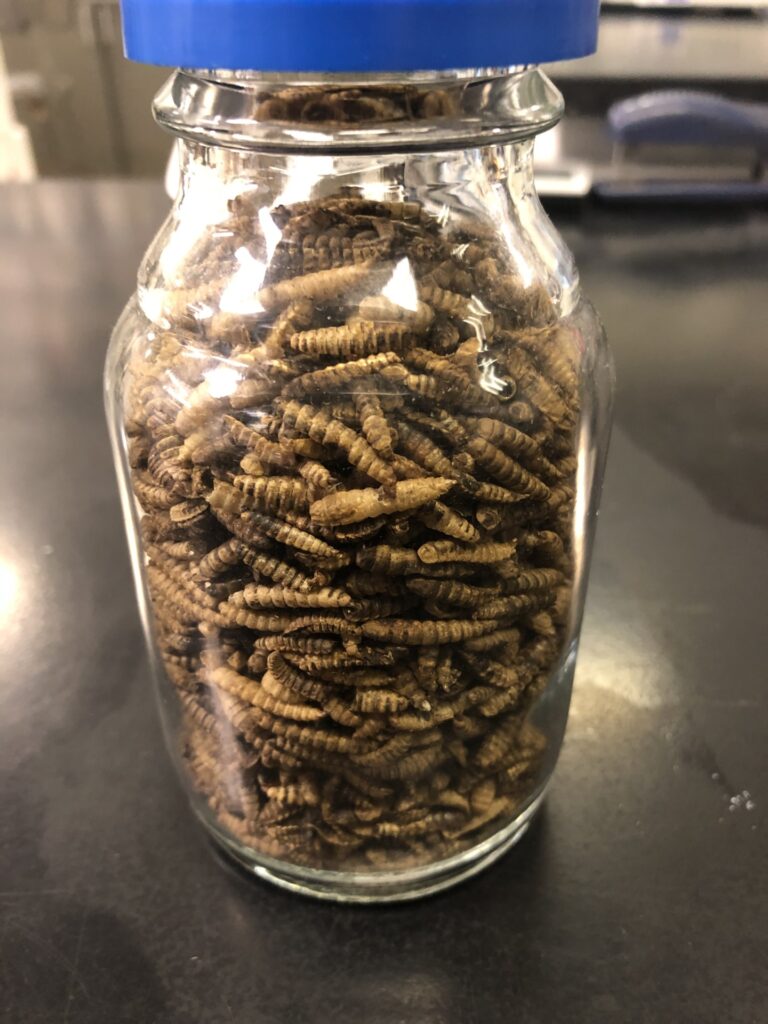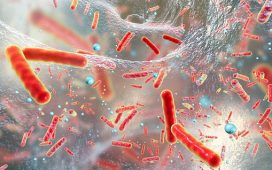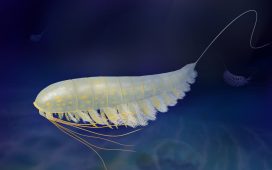Reza Ovissipour, Ph.D., a Texas A&M AgriLife Research assistant professor in the Texas A&M College of Agriculture and Life Sciences Department of Food Science and Technology, is actively contributing to solutions for the crucial food-related challenges of today — and tomorrow.


Ovissipour’s research is dedicated to advancing the sustainability, resiliency and robustness of agrifood systems. This involves exploring innovative approaches such as insect-based food and feed production, repurposing agrifood waste and implementing aquaponic and hydroponic systems.
His work includes cellular agriculture, precision fermentation, food safety, microbiome, bioprocess engineering and artificial intelligence-assisted food processing.
Ovissipour earned his master’s degree in natural resources engineering-seafood science and technology from Tarbiat Modares University in Iran. Additionally, he holds a doctorate in natural resources engineering-bioprocess engineering from the same university, as well as a second doctorate in biosystems engineering-food engineering from Washington State University in Pullman, Washington.
As an expert in cellular agriculture, biosystems engineering and bioprocess technology, we asked him to give insights into the role of technology in elevating and optimizing food systems, promoting environmental well-being and meeting the nutritional needs of an ever-growing world population.
What sparked your interest in natural resource and biosystems engineering?
I have consistently gravitated towards addressing challenges related to food crises, waste management, water scarcity and gas emissions. Recognizing biosystems engineering as a multidisciplinary field, I saw potential to effectively tackle these issues through microbial fermentation, precision fermentation, alternative protein development, cellular agriculture and engineering.
What intrigues you about examining and gaining a deeper understanding of food at a cellular level?
Food materials are intricately composed of cells and molecules from bacteria, yeasts, insects, plants and animal resources. In my lab, our emphasis lies in harnessing cells from these diverse resources and programming them to generate specific ingredients for various food and feed applications. For instance, we are currently cultivating stem cells derived from both plants and animals to enhance food production. Our research also involves leveraging single-cell organisms to improve food digestibility, flavor, color and taste.
What research projects you have undertaken since coming to Texas A&M?
Our work covers various topics, including upcycling foods for food production, insects as food, and fermentation. Some of the most exciting areas we’ve explored include:
- Using animal and insect gut microbial communities for fermentation.
- Employing agrifood wastes and fermentation technology to create cost-effective cell culture media.
- Crafting scaffolding for texturizing cell-based meat using banana leaf.
- Innovating in the development of food products from insects.
Which other departments have you collaborated with in your research, and what expertise did they provide?
I work with many great partners from various departments, including horticulture, entomology, biological and agricultural engineering, and food science and technology. Their expertise is instrumental in advancing our research efforts in fermentation, precision fermentation, alternative protein and artificial intestine efforts as well as our insect program.
How do you envision your research contributing to the improvement of agrifood systems and food production?
Given the projected global population of 10 billion by 2050, there is a pressing need for a 70% increase in overall food production and a 100% increase in meat production to meet the rising demand. The existing world food production system grapples with challenges such as limited agricultural water and land availability, compounded by rising greenhouse gas emissions. Moreover, a critical concern in food supply chains contributes to a substantial amount of food loss. Addressing these challenges is at the forefront of my program at Texas A&M, where we are dedicated to exploring new sources of sustainable protein and innovative food production methods.
Tell us about your work with insect-based food and feed production and how it can positively impact agrifood systems.


Before joining Texas A&M, I focused on integrating insects into feed production for aquaculture. Our team successfully incorporated frass — a by-product of insect breeding — into fish diets and aquaponics, serving as a sustainable source for both fish and plant nutrition. We also employed bioprocessing and fermentation techniques to convert insects into peptides and postbiotics, creating cost-effective media for cellular agriculture.
Upon joining Texas A&M, I collaborated with Dr. Jeffery Tomberlin, a professor in the Texas A&M Department of Entomology and the lead principal investigator for the large insect program of the Center for Environmental Sustainability through Insect Farming. Together, we are dedicated to the development of insect-based food for human consumption and exploring various bioprocessing and fermentation approaches to transform insects into postbiotics for cellular agriculture.
How can bioprocess technology and fermentation enhance or improve biotics quality — and why is that significant?
In bioprocessing and fermentation, we leverage gut microbial communities isolated from specific animals, along with commercially available microorganisms or their products, such as enzymes. This enables us to break down feedstock into essential components like protein, fat, peptides, vitamins and carbohydrates, which can be utilized for various applications. Bioprocessing and fermentation also play a pivotal role in enhancing the flavor, taste and texture of food products, thereby increasing their palatability and digestibility.
What is your interest in biomaterials and bioplastics and their applications?
Micro- or nanoparticles often persist in soil, creating negative effects on microbial activity, soil physical properties and nutrient availability. A possible alternative to traditional plastic mulch is biodegradable plastic materials, which can be broken down by microorganisms without adversely affecting microbial communities. This approach also has the potential to improve soil physical properties and nutrient availability. In our research, we’ve successfully developed biomaterials and bioplastics from agrifood wastes such as whey, seafood and insects, including crickets and black soldier flies.
How is your research addressing agrifood waste and exploring opportunities for reusing or repurposing this waste?
We are actively involved in the upcycling of agrifood waste, transforming it into valuable ingredients for a variety of applications. Our product portfolio includes fertilizer, animal feed, pet food, media for yeasts and bacteria, vaccine production and algae mass production. Recently, we have used them as feed for animal cells in the field of cellular agriculture. Dr. Tomberlin and I are exploring the use of insects as mini-bioreactors to efficiently convert specific wastes into target materials.
What work are you conducting regarding hydroponics and aquaponics, and do you anticipate these food production methods gaining more prominence in the future?
Both aquaponics and hydroponics systems represent highly sustainable approaches with minimal water requirements. My research has extensively focused on ensuring food safety and maintaining water quality in both systems. I’ve successfully applied photosensitizers, such as curcumin activated by LED light, to deactivate pathogenic bacteria in aquaponics water and on plant surfaces.
How do you think food systems need to evolve to meet the needs of a growing global population?
The food industry should embrace emerging technologies to address the escalating demand for meat and high-quality proteins. This proactive approach is essential for overcoming many challenges, including environmental impact, emerging diseases, pesticide usage, antibiotics and antibiotic-resistant bacteria.
The U.S. Department of Agriculture’s 25-year goals, which aim for a 40% increase in American agriculture production, a 50% reduction in environmental footprint and the development of a new adoptable techno-economically viable system, underscore the urgency for innovation. Emerging food technologies, including precision fermentation, alternative proteins, vertical farming, insect farming, AI-assisted technologies and cellular agriculture, hold the potential to effectively and sustainably address these goals.
-30-











